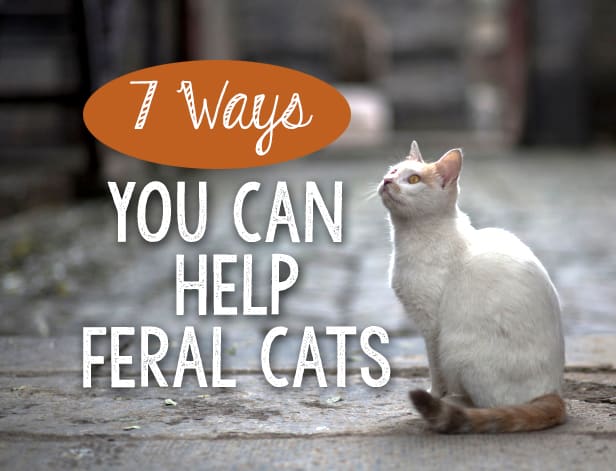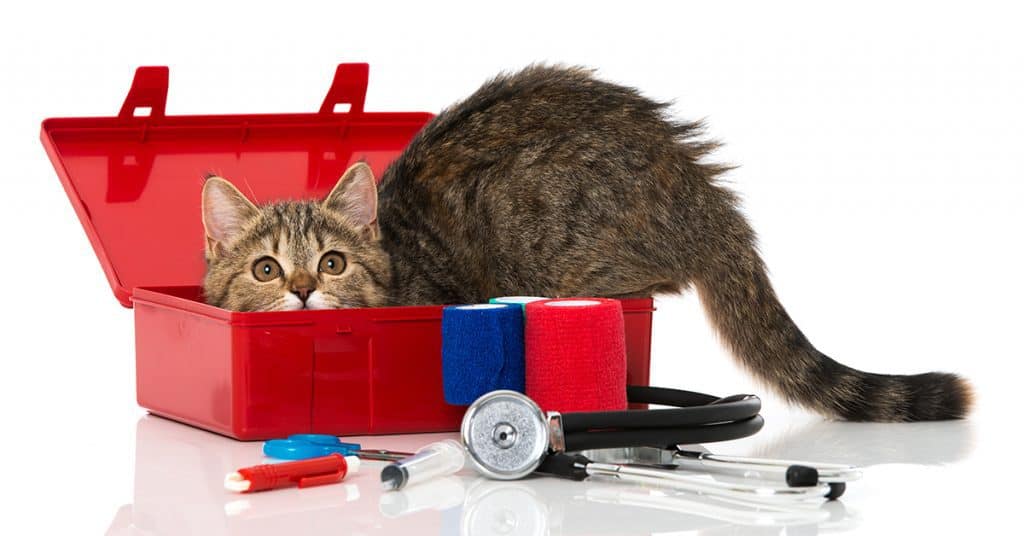A feral cat is generally described as one who is wild, unsocialized, fearful of all humans, and unable to be placed into a typical pet home. It’s estimated that there are upwards of 70 million feral cats in the United States – as many cats as we have as loved pets – living in vacant lots, abandoned buildings, eating from trash cans, facing injury, disease, pregnancy, extreme weather, and short, difficult lives.
Feral cats exist nearly everywhere. Though they are afraid of people, most of them rely on the kindness of humans around them for their livelihood. Here are 7 ways you can make a real difference in the hard lives of the feral cats in your community:
1. Trap, Neuter, Return
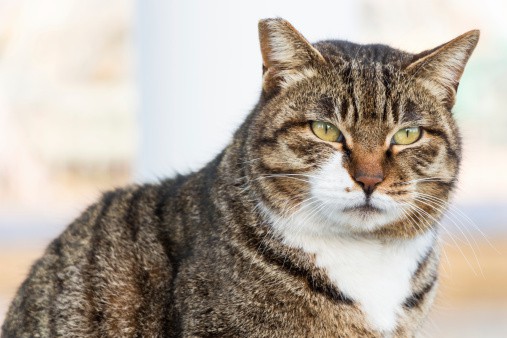
Many experts agree that one of the very best ways to help feral cats is through Trap-Neuter-Return (TNR). In fact, TNR is endorsed by the ASPCA as “the only proven humane and effective method to manage feral cat colonies.”
The TNR technique generally involves trapping all the feral cats in a colony, having them neutered by a veterinarian, vaccinating them against rabies and sometimes other diseases, and then returning them to their place where caretakers can look after them. They often have their ear tipped to indicate the cat has been altered to avoid having to be trapped in the future.
Many communities have TNR programs in place that will offer low- and no-cost spay and neutering for feral cats. If no such program exists in your area, consider getting a humane trap and having the cats in your colony neutered as your budget allows.
TNR works extremely well to reduce feral cat populations. In fact, a PhD study in North Carolina found that TNR consistently reduced the populations of feral cat colonies by 36% over two years, while the non-TNR’d colonies increased by 47%.
2. Provide Shelter, Food & Water
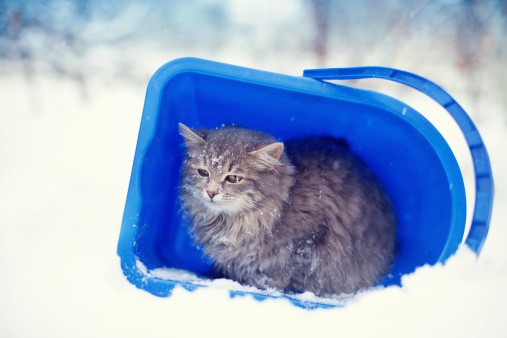
Since feral cats spend their entire lives outside, they are exposed to the harshest weather. The scorching heat of summer and the sub-freezing cold of winter can mean certain death for these cats. Providing shelter from extreme temperatures is one of the easiest and least expensive ways to ensure their safety. You can find many kinds of outdoor cat shelters to fit your needs or click here for instructions on how to make your own.
If you’re willing to make a long-term commitment to the feral cats in your area, provide food and water for the kitties. They will come to depend on you for their meals, so only feed them if you’re willing to continue to feed them. Dry food is recommended because it can remain out all day without spoiling. Give the cats fresh water every time you feed them. Consider heated bowls in the winter to keep water from freezing.
3. Flea Prevention

Since feral cats are often unable to be handled, traditional methods of flea prevention and treatment, like topical medications and flea baths are most likely out of the question. The good news is that there are now oral medications that can be crushed and added to the cats’ food. Capstar is safe for cats and kittens 4 weeks and older and will kill all fleas on the cat within six hours. A follow-up medication to control future flea infestation can be purchased from your veterinarian.
4. Treat for Parasites
Roundworms, coccidia, and giardia are common and can easily spread among cat colonies. Pyrantel Pamoate can easily be given with cat food to deworm feral cats. Consult your veterinarian for a deworming protocol based on the size of the cat colony.
5. Foster Kittens
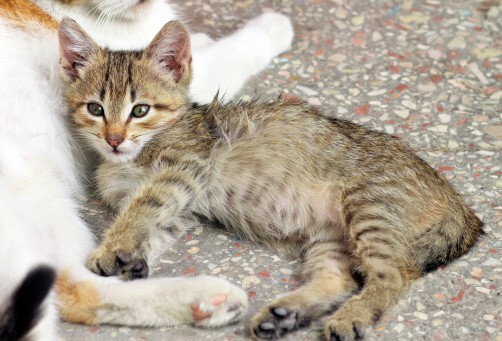
Consider fostering feral kittens, raising them, and socializing them so that they can be adopted into loving pet homes. Young kittens should be removed from the colony as soon as they are weaned from their mother and taken inside. Keep them confined to an area that can be closed off, like a spare room or get a large nylon playpen, that can hold food and water dishes, a hiding spot, soft bedding, and a litter box.
Move slowly, speak softly, and spend lots of time with the kittens, so that they come to realize human interaction is a positive experience. Use treats, food, and toys as an incentive to gain your foster kittens’ trust and take care to make sure they become comfortable with human touch and being held. When they’re ready, introduce them to other people and other pets in the home to further socialize them. In time, they can become well-adjusted social pet cats!
6. Rehabilitate Adult Feral Cats

Some feral cats were born in the wild and may never be approachable while others may have been pet cats at one time that either escaped or were abandoned and had to become feral to protect themselves. In many cases, adult feral and semi-feral cats can be rehabilitated. The process is not unlike socializing feral kittens, but usually takes more time, patience, and a basic understanding of feline behavior. Provide them with a safe, quiet environment, consistent feeding, and lots of treats to gain their trust.
7. Get the Word Out
If you’re aware of someone feeding or caring for a feral colony in your area, and those cats are not spayed or neutered, there’s a good chance the caregiver either doesn’t realize the importance of TNR or doesn’t have the financial means to provide full veterinary care for all the cats. They may not be aware that there is often assistance available! So, do your best to educate those that are simply trying to help.
Do you care for feral cats in your community? Or, have you successfully rehabilitated a feral cat that is now your pet? Tell us about it!
If you found this article helpful, pin it!
